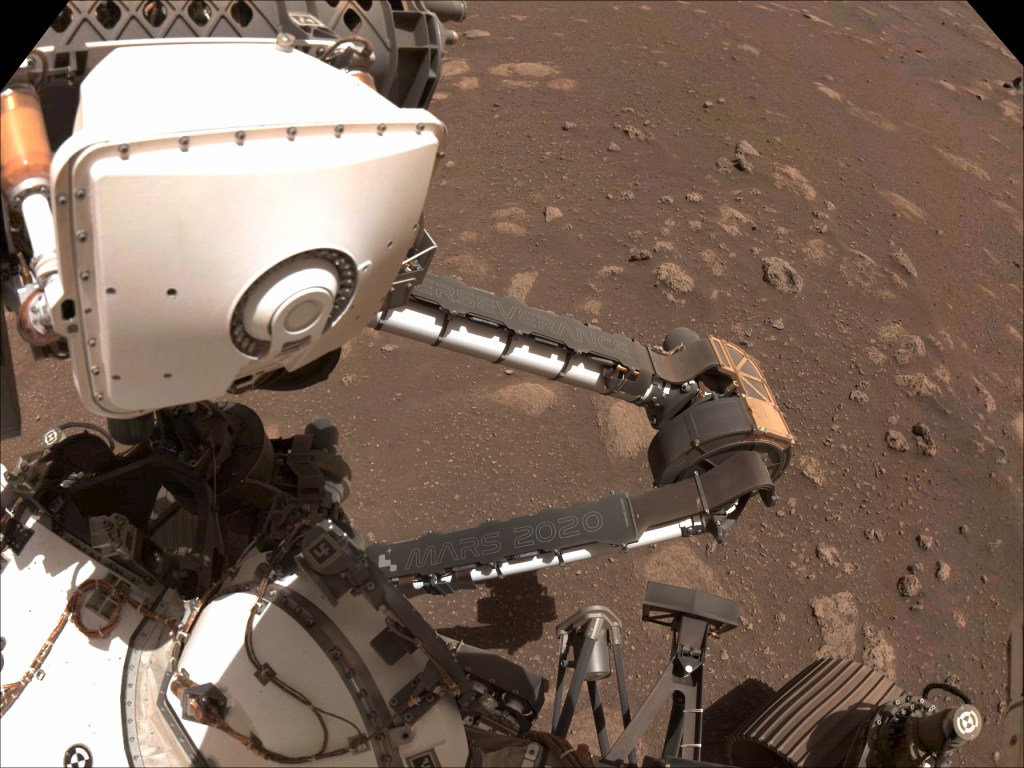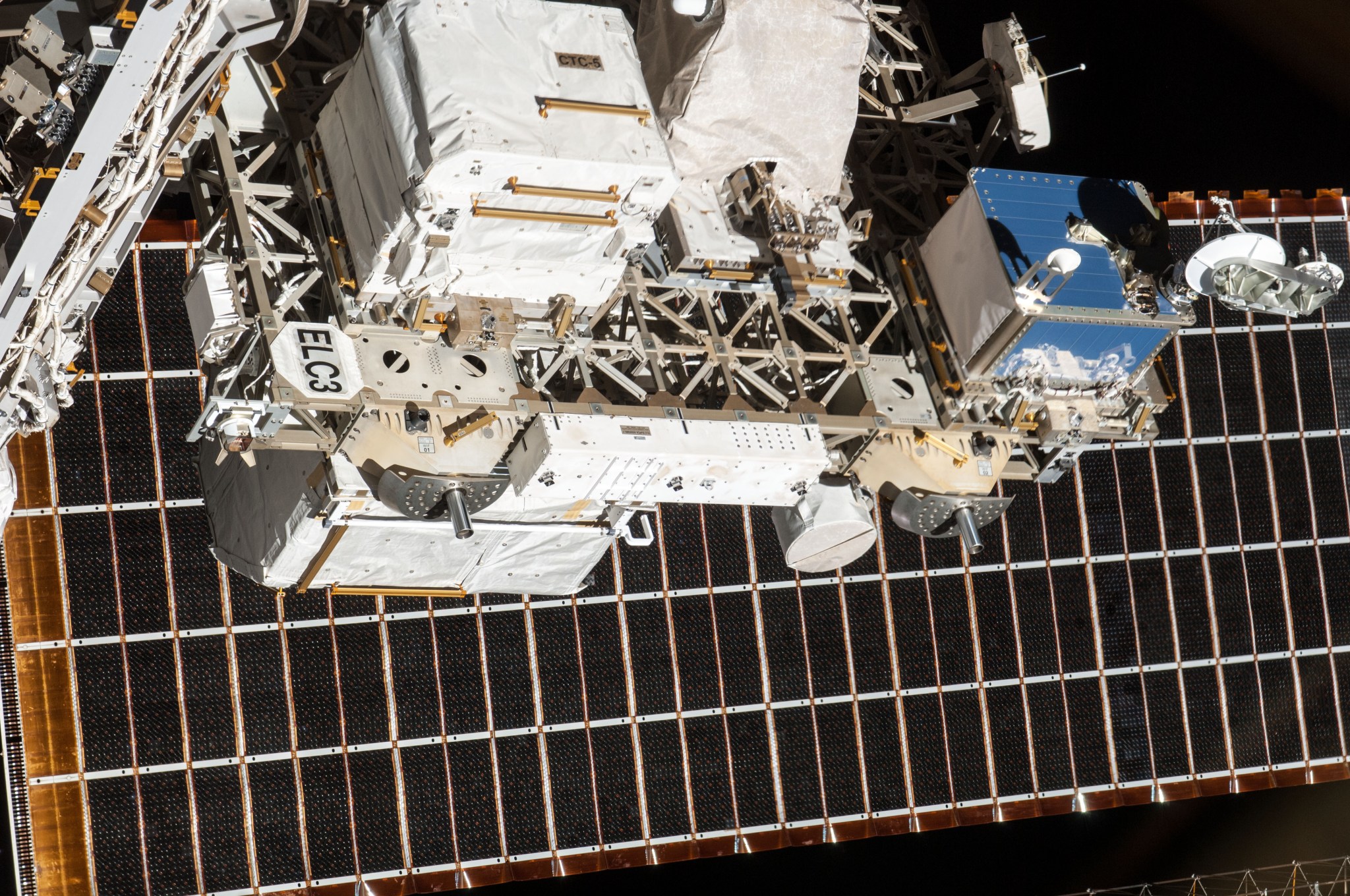After seven successful years, and more than 4,200 hours of testing, NASA’s Space Communications & Navigation (SCaN) Testbed was decommissioned June 3 as it burned up in the trunk of SpaceX CRS-17 upon reentry into Earth’s atmosphere.
Launched in 2012, after being designed and built at NASA’s Glenn Research Center in Cleveland, the testbed was installed aboard the International Space Station to serve as an on-orbit, software-defined radio (SDR) test facility to create more access and flexibility to communicate. As astronauts venture forward through the Artemis program, NASA and its partners may apply radio communications technology developed through this facility for missions at the Moon.
The basic building block of radio communications is a radio wave, where the number of times a wave repeats in a second is called frequency. All cellphones and radios operate on a particular frequency to communicate. However, there is a limited amount of space for each frequency, and the sheer number of devices within that frequency meant NASA had to take a resourceful approach to radio communications. Researchers at Glenn and Harris Corporation developed a new radio technology using the higher frequency “Ka-band” portion of the spectrum, which could be adjusted by changing the software programs on the radios.
The Ka-band radio experiment was extremely successful, eventually evolving into successful commercial products used for global aircraft and ship tracking on the Iridium satellite network. The commercialization and the services created helped the Ka-Band radio earn an R&D 100 award-winning technology in 2013, and the technology was inducted into the Space Technology Hall of Fame this year.
“Using software-defined radio, NASA has demonstrated how partnering with the commercial sector can advance technology to meet its evolving needs, while creating economic opportunities that can benefit the larger commercial market,” said Badri Younes, Deputy Associate Administrator for Space Communications and Navigation.
The SCaN Testbed also contributed to the Space Telecommunications Radio System (STRS) by developing nine compliant radio waveforms, or reusable software components, which increase the reliability of SDRs, while decreasing the development time and cost. It also contributed to the STRS repository, which allows for future missions to seamlessly reuse prior software developments and investments. STRS have become a NASA Standard, and commercial companies are now using STRS radios and applications in their commercial spacecraft.
“Much of our technology and scientific achievements will be transferred to the private sector and create additional economic opportunities,” Younes said.
Over the years, NASA Glenn partnered with nearly 40 organizations, including other NASA centers, universities, commercial companies and several foreign space agencies, to use the SCaN Testbed to achieve many firsts in radio communication, networking and navigation capabilities. It was the first NASA mission to use Ka-band within NASA’s Space Network and the first to receive Global Positioning System (GPS) Civil Navigation messages in space. Earlier this year, the testbed was also the first user of the European Galileo E5A navigation signal, demonstrating the benefits of merging Galileo and GPS to precisely determine orbits of spacecraft.
During its lifespan, the testbed was also responsible for increasing mission planners’ trust in SDR technology.
“SCaN Testbed challenged the perception that even a single reconfiguration poses significant mission risk by routinely – more than 850 times – demonstrating the reconfiguration of radios in space,” said Richard Reinhart, SCaN Testbed principal investigator. “The ability to change or modify radio operations reduces risk by allowing the communication system to work around unexpected hardware or system failures, and providing multiple communications capabilities from the same hardware.”
The testbed also provided valuable insights that NASA’s Cognitive Communications Project will use to increase a respective mission’s capabilities and a communications system’s resiliency by merging SDR technology with machine learning, networking and automation.
“We’ve demonstrated the ability to reconfigure communication systems on the fly,” said Dave Chelmins, the cognitive communications project manager. “The next step is to make that reconfiguration autonomous and responsive to the needs of the mission spacecraft.”
Last year, the SCaN Testbed demonstrated the first-ever adaptive space link controlled entirely by an artificial intelligence algorithm, and the cognitive communications team already is working towards a follow-on cube-satellite flight mission.
Virtually every endeavor that NASA undertakes requires communications or data transfer via the electromagnetic spectrum. The spectrum is a limited natural resource and multiple users cannot transmit radio signals at the same frequencies, at the same time in the same direction without creating signal interference problems. Today and in the coming years, NASA will apply innovative approaches, like the SCaN Testbed, to ensure future exploration efforts from the Earth, to the Moon and beyond will have access to this critical resource.




























